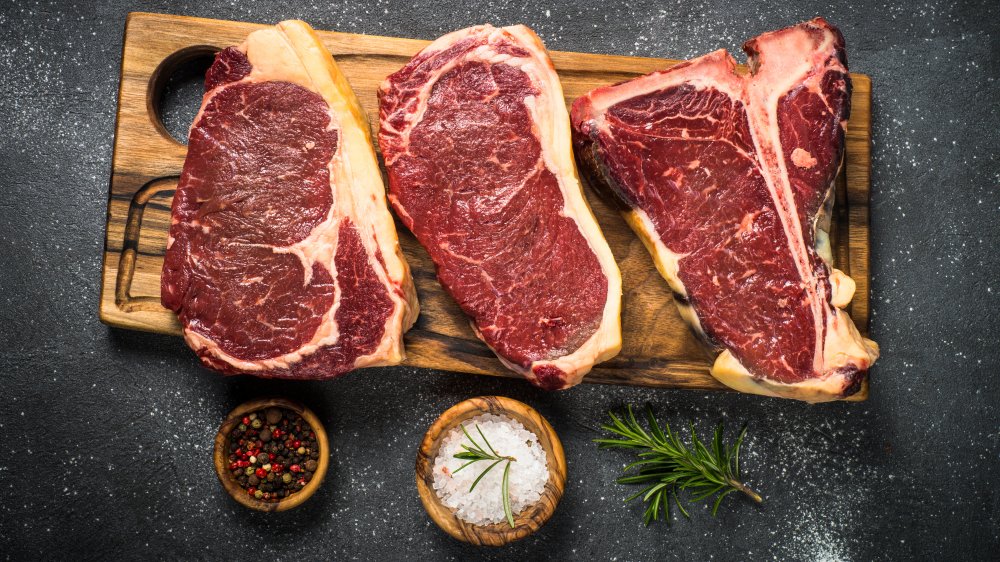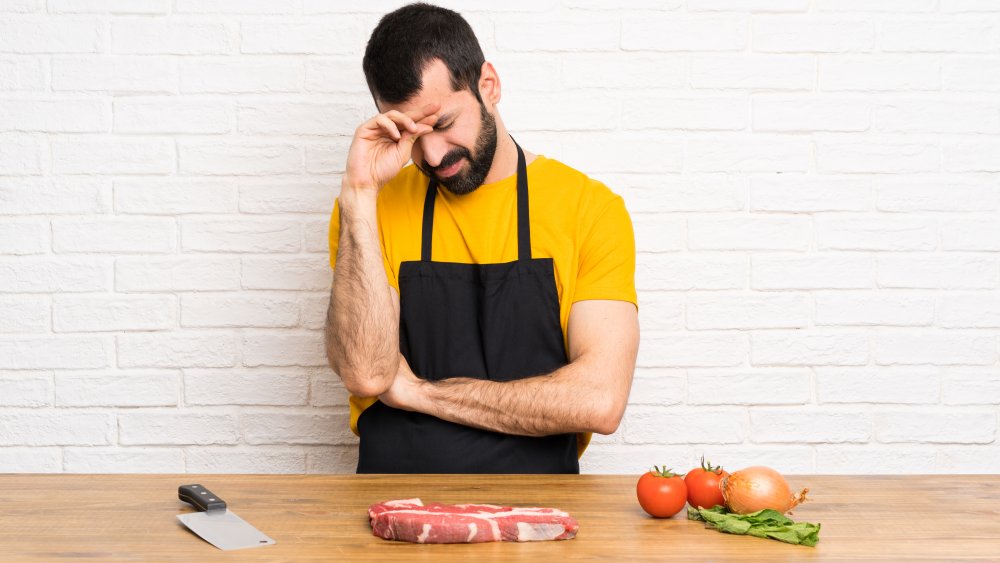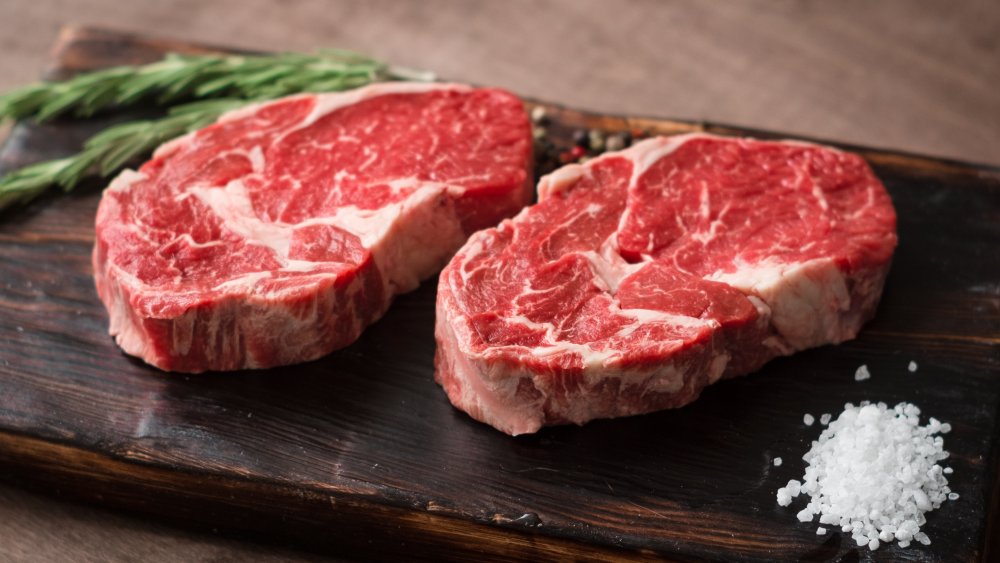This Is The Cut Of Steak You Should Probably Avoid
We may receive a commission on purchases made from links.
To understand if a certain cut of steak is one you should snatch up at the store or one you should avoid, it's helpful to think about the anatomy of a cow and where the steak in question came from. The Spruce Eats explains that cows heavily exercise the muscles in the rear legs and rump, which tend to be tough and low in fat. While we humans may strive for this sort of firm, tight backside, it doesn't make for a great steak.
The biggest cut of meat from this section of the cow is called the beef round. If you're in search of tender, flavorful steak, it's the cut you should probably avoid. Aside from being super lean, the beef round also has a lot of tendons, ligaments, and connective tissue running throughout, and lacks flavor, according to The Spruce Eats. All of this is to say, the round is kind of a chore to cook and eat. Because the beef round is such a big cut, you'll often see it broken down into three separate parts, labeled with different names. Here's what to look out for.
Beef round has three parts and goes by different names
One cut of beef round you may encounter is the sirloin tip, which is a prettier name for "knuckle" and it's a muscle that runs from the cow's hip to the knee. It can be sold as a roast or cut into steaks. It's the tenderest part of the round, according to Saveur, but The Spruce Eats warns that it's plagued by chewy connective tissue so braising it is your best bet. Sorry, but "braised steak" is not exactly what we're looking for. The beef round also includes parts known as the eye of round and the bottom round, which you may recognize by its other name: rump roast. "Roast" is the keyword there because that's about the only thing this cut is good for and you won't really see it sold as steak.
Last comes the top round, which is sometimes called London broil. You've likely seen this before – it's a common cut that needs to be cooked to medium-rare and thinly sliced. Otherwise, it feels and tastes like chewing on a boot. Top round can be sold as steak but if you come across it, move along. Round steak really may be more trouble than it's worth.
Round steaks are no fun to cook
Round steaks are considered a budget cut of meat and that low price can be very appealing. But because they don't contain much fat, round steaks can become dry and chewy when cooked (via Nose to Tail). We're here to tell you, only buy a round steak if you can summon the patience to pamper it. Delish's recipe for round steak treats the meat to spa-like therapy that most of us don't receive on our best day.
The recipe instructs us to pound the steak with a meat mallet to tenderize it, marinate it in an oily, herby bath for 30 minutes, and then douse it with butter while cooking. Surely all of this effort will result in some kind of success but we'd much rather buy steak with some inherent flavor and tenderness rather than one that needs to be convinced to taste good. The next time you're shopping for steak, bypass the beef round and opt for something that requires little effort for reliably tasty results, like a ribeye.
Why ribeye steaks are better than round steak
The primary advantage a ribeye steak can claim over a round steak is fat content. Considering once again the anatomy of the cow, Omaha Steaks points out that the ribeye comes from an area between the shoulder and the loin that collects a lot of intramuscular fat, which refers to those white flecks of fat dispersed throughout red meat. This is also called "marbling" and it's a surefire indication of a tasty cut of steak, per Crowd Cow.
Beef round, from its lowly position on the nearly fat-free, muscular rear end of the cow, just can't compete. A well-marbled ribeye is going to offer better flavor and tenderness compared to a lean round steak any day. MasterClass explains the difference comes down to mouthfeel and moisture. Fat is more tender than muscle fiber so it creates a more desirable mouthfeel when we eat it. Additionally, those flecks of fat melt into the meat as it cooks, keeping the steak moist and juicy. So, it seems the choice is clear. When shopping for steak, go marbled or go home.



